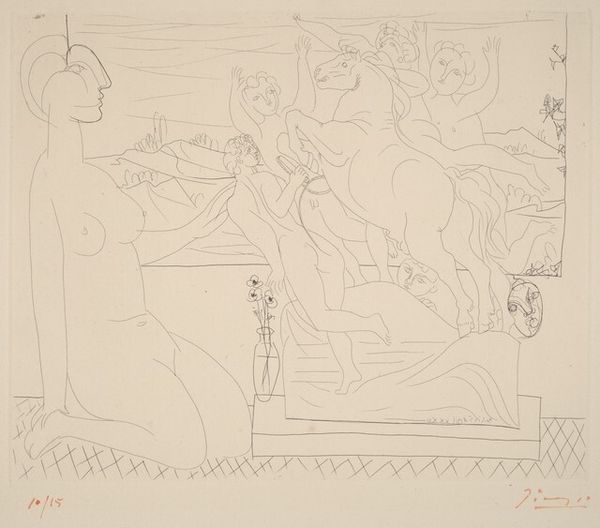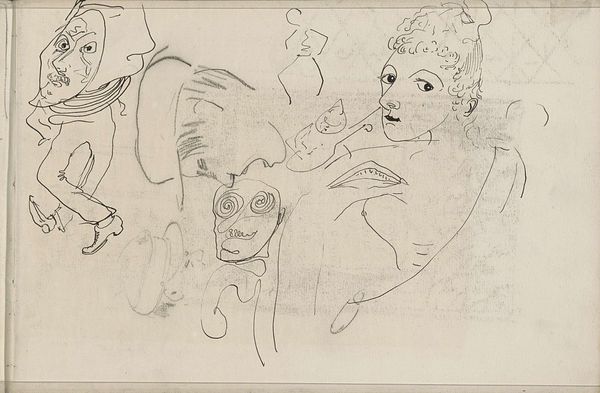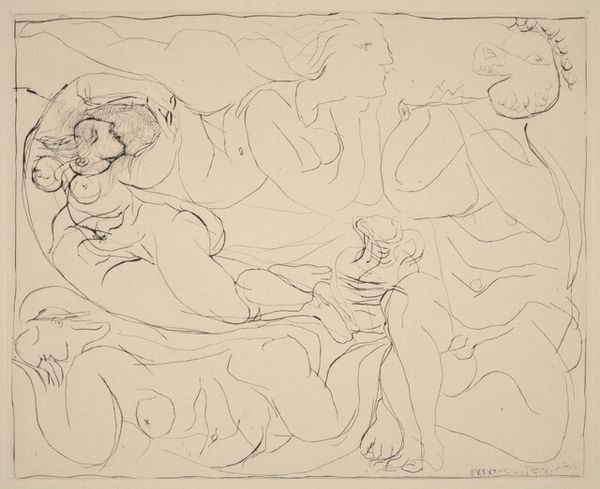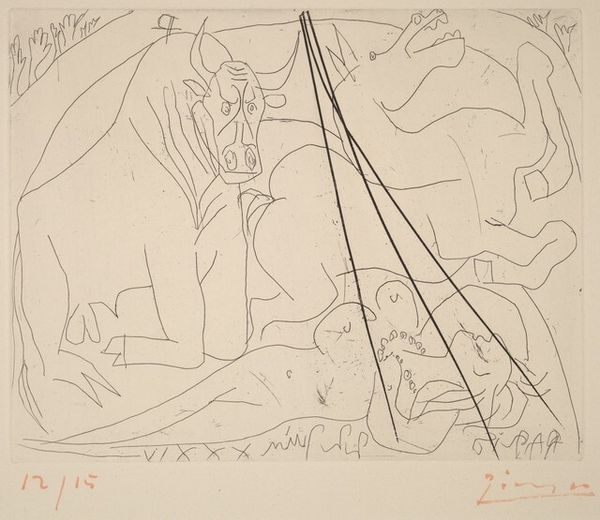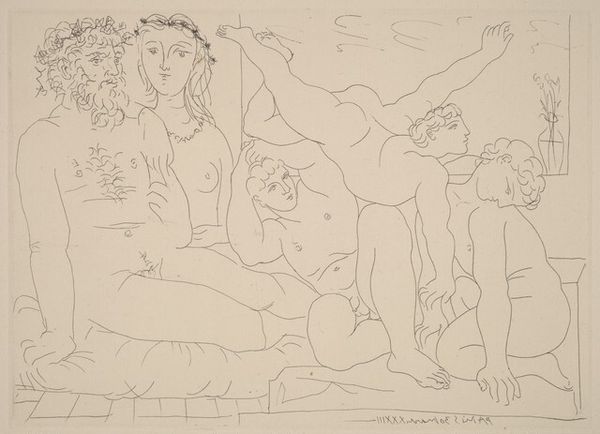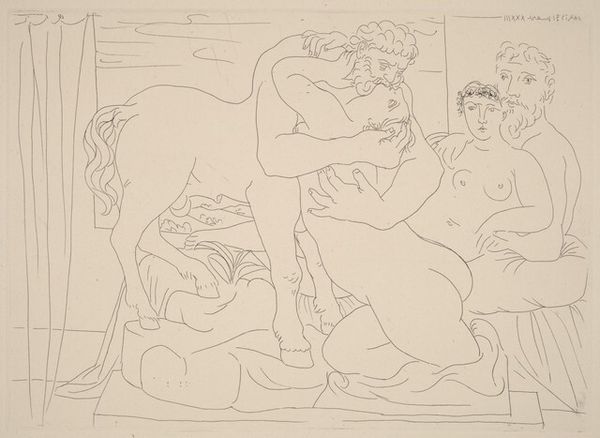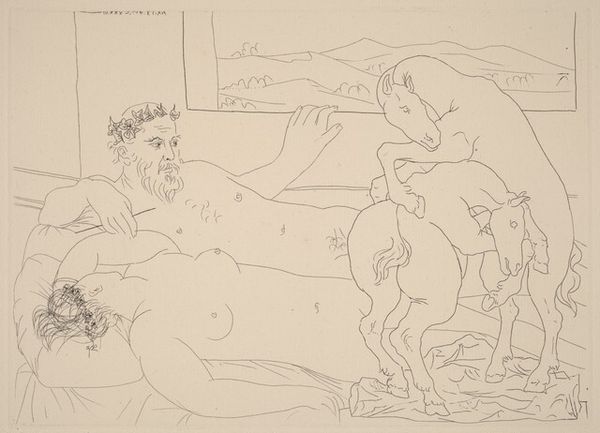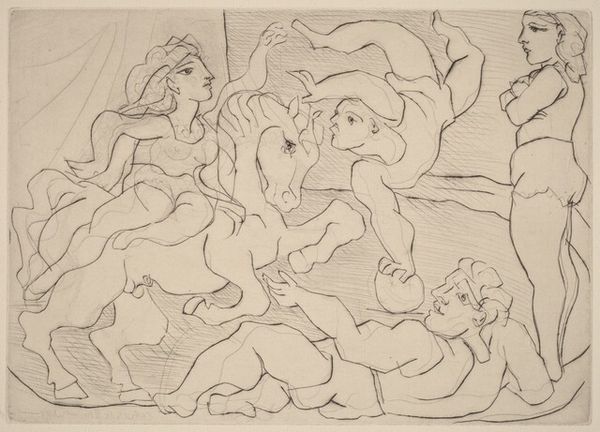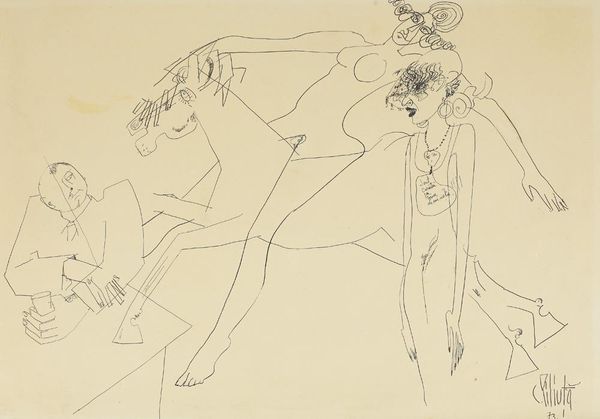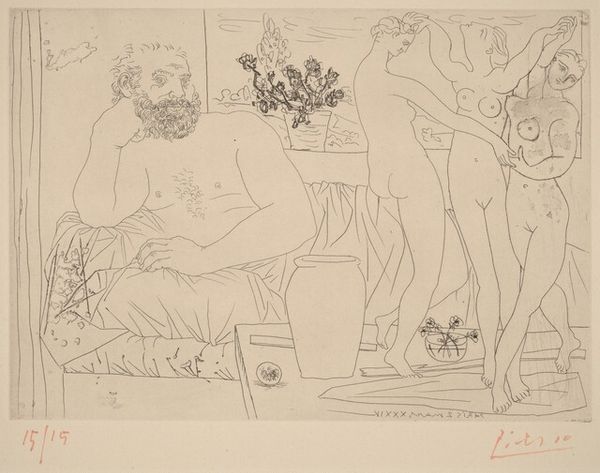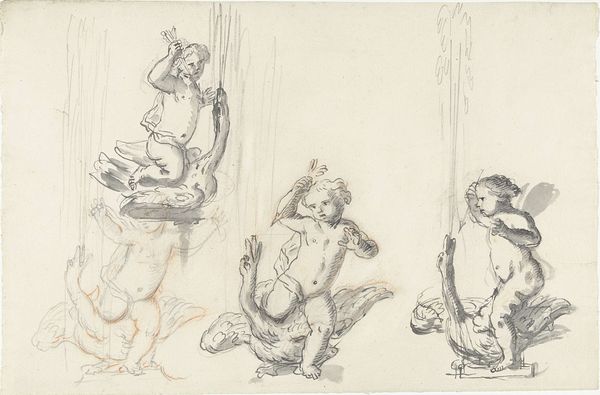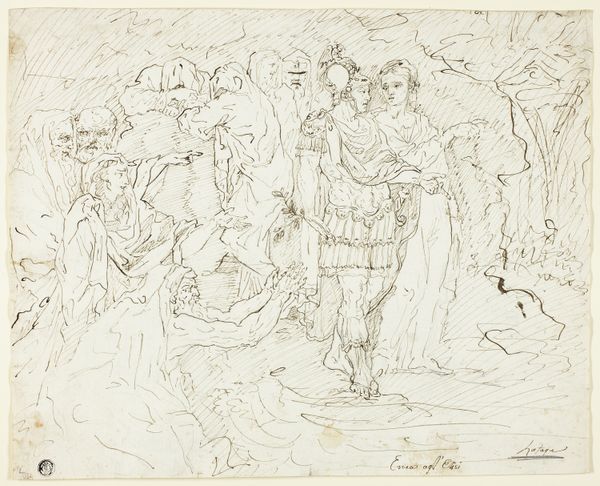
Sculptor, Model, and Boy with a Sculpture Representing the Abduction of Europa (Sculpteur, garçon et modèle avec un groupe sculpté représentant le rapt d'Europe) 1933
0:00
0:00
drawing, print, ink, pen
#
drawing
#
cubism
#
ink drawing
# print
#
pen sketch
#
figuration
#
ink line art
#
ink
#
pen-ink sketch
#
pen
#
nude
Dimensions: plate: 19.5 x 26.3 cm (7 11/16 x 10 3/8 in.) sheet: 38.5 x 49.8 cm (15 3/16 x 19 5/8 in.)
Copyright: National Gallery of Art: CC0 1.0
Editor: This is “Sculptor, Model, and Boy with a Sculpture Representing the Abduction of Europa” by Pablo Picasso, made in 1933 using pen and ink. It's fascinating how Picasso manages to evoke a classical scene with such simple, almost playful lines. What visual stories do you think Picasso is telling us here? Curator: This image pulses with echoes. Notice how the "Abduction of Europa" is re-staged as a sculpture *within* the drawing, placing layers of reality and myth in conversation. Europa's story isn’t just a tale of abduction; it’s a potent symbol of transformation, of Europe’s very origin story. The bull, both beast and divine symbol, is wreathed in flowers, blurring the line between the brutal act and a sacred ritual. Editor: That's interesting. I hadn't considered the flowers as a means to elevate the abduction to a ritual. Curator: And what of the sculptor and the boy? They witness, perhaps even enable, this transformation. Consider the act of creation – the sculptor molds myth into form, much like Zeus transforming himself. Do you see a parallel in Picasso’s own act of creation here, Editor? Editor: I suppose so. He's transforming the classical myth into a modern idiom. It makes me wonder if the boy represents the future of art, inheriting and reinterpreting these stories. Curator: Precisely. The images feel light and accessible but are actually complex interpretations. It evokes layers of meaning, drawing on cultural memory while speaking to the continuous process of artistic reinvention. And the contrast of the smooth female figure with the beast... What feelings do you sense are associated with these two images in our collective imagination? Editor: I see the historical lineage you mentioned, linking Europa’s story with how Picasso continues the narrative through a modern, personal lens. I now have a new appreciation for how Picasso is referencing both classical myths and the creative process itself.
Comments
No comments
Be the first to comment and join the conversation on the ultimate creative platform.
